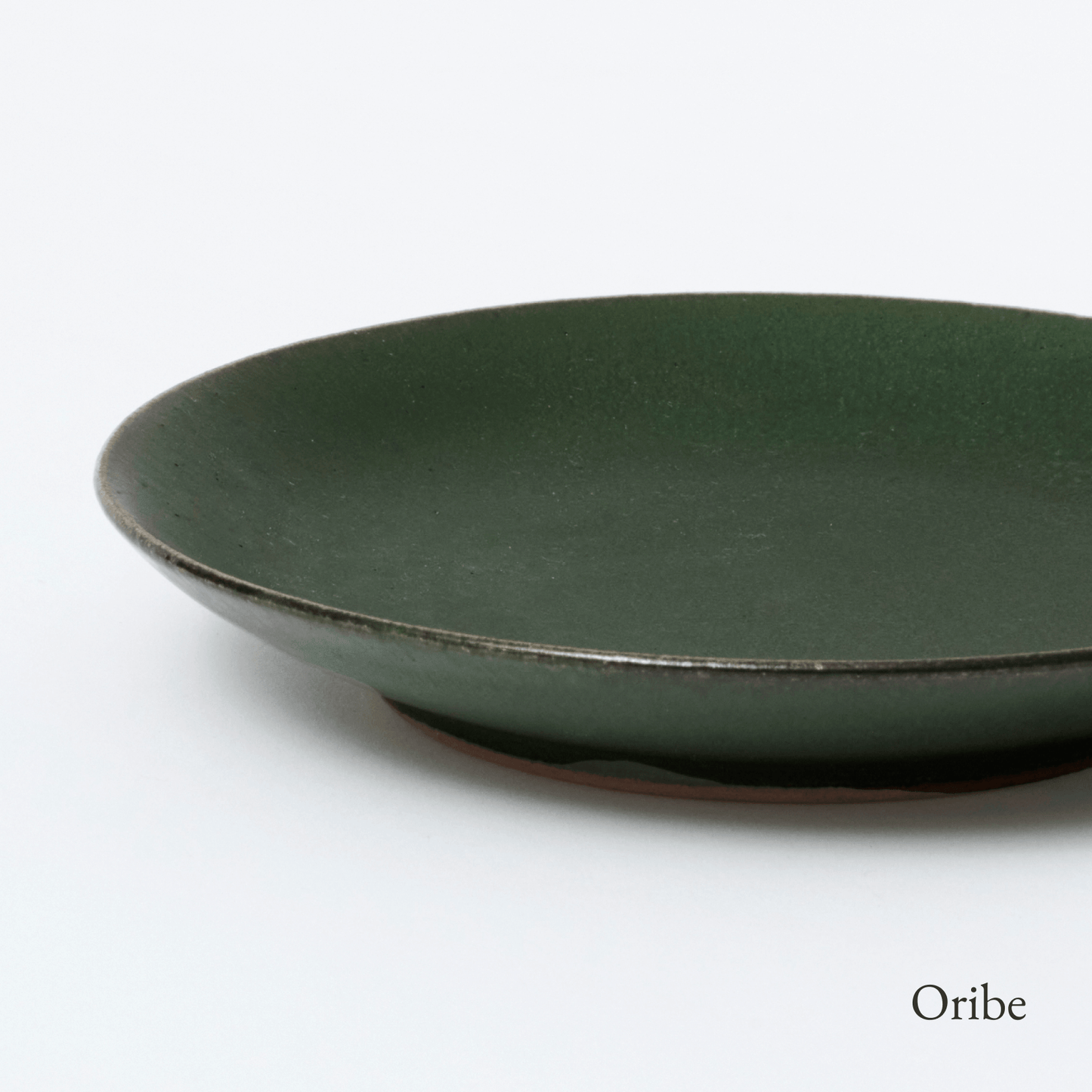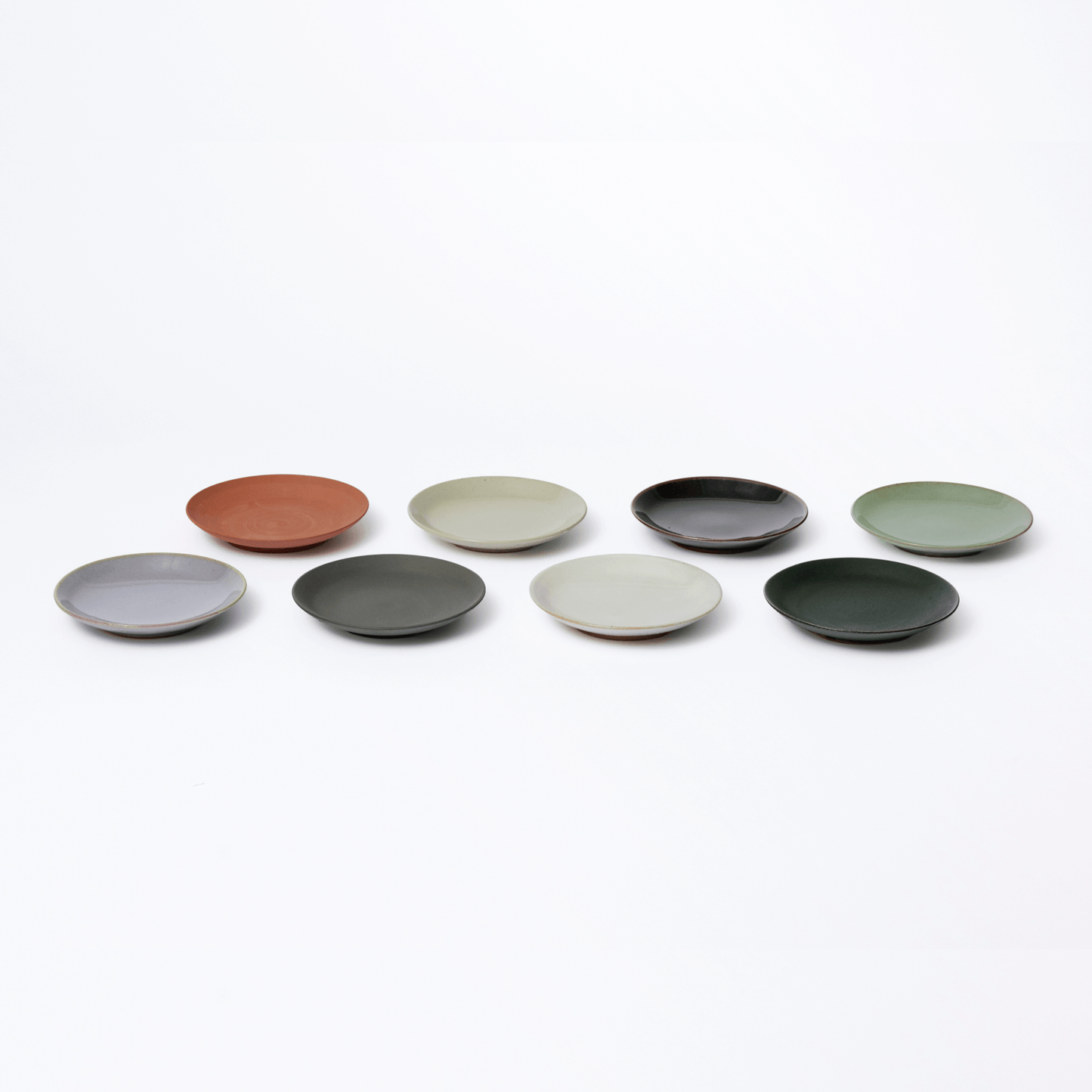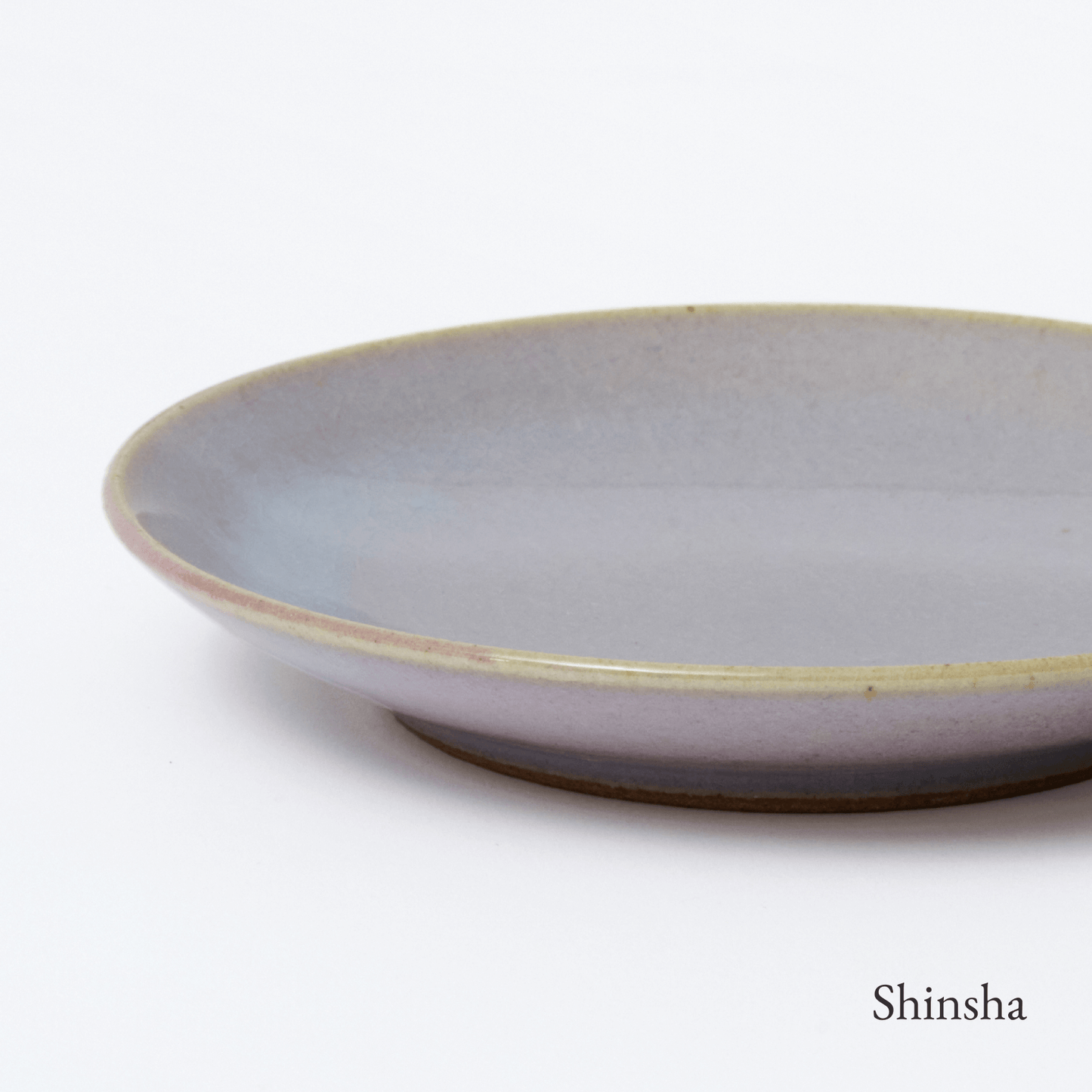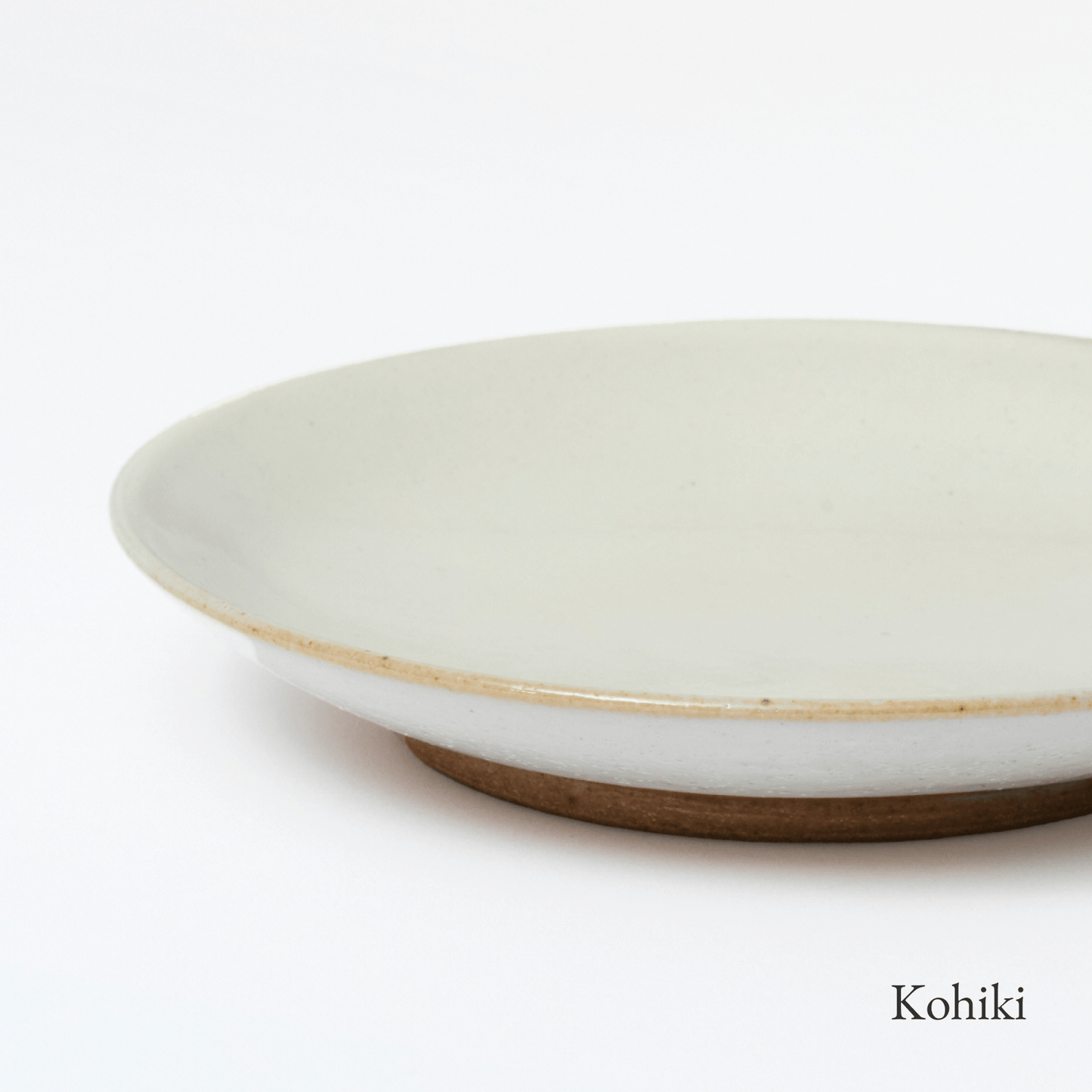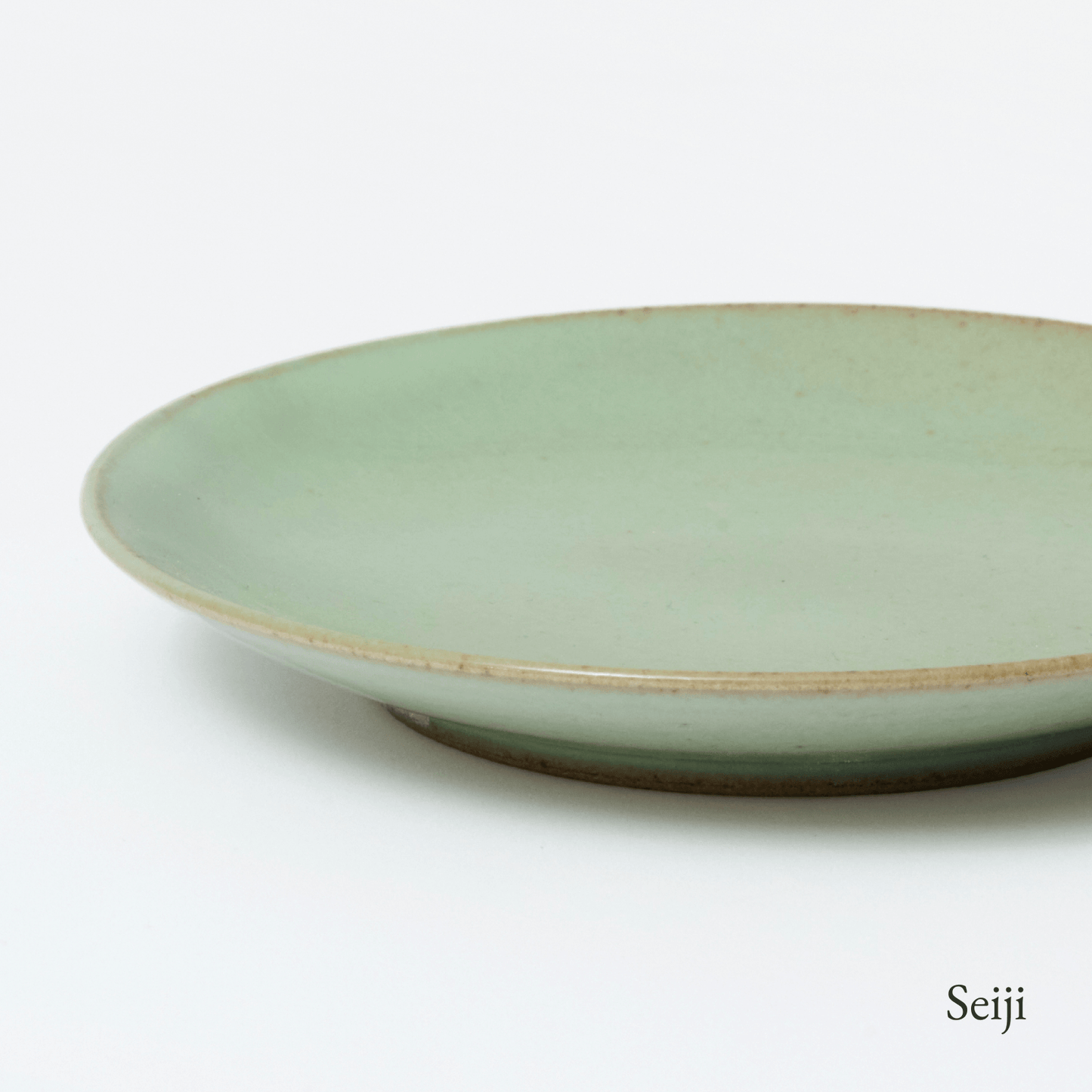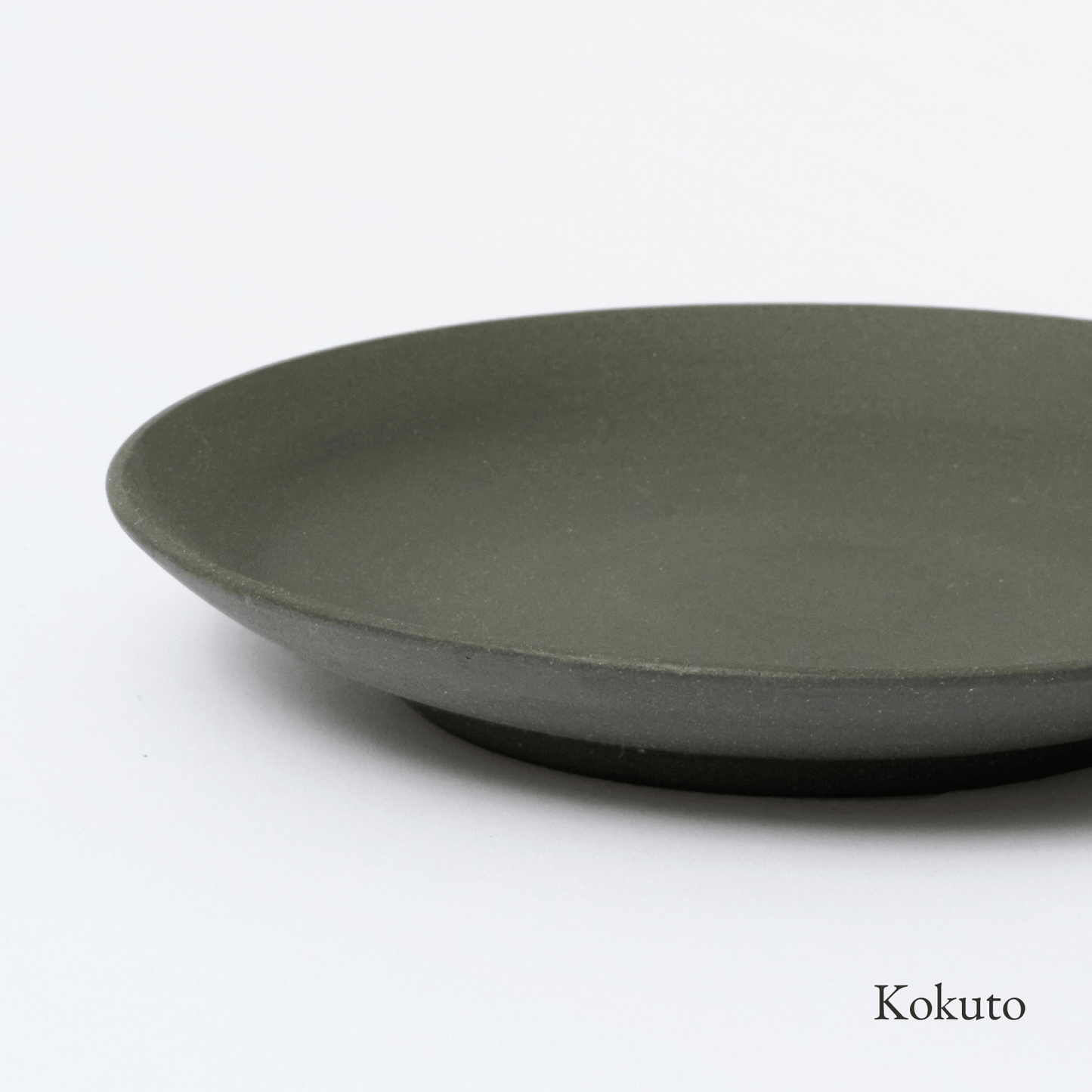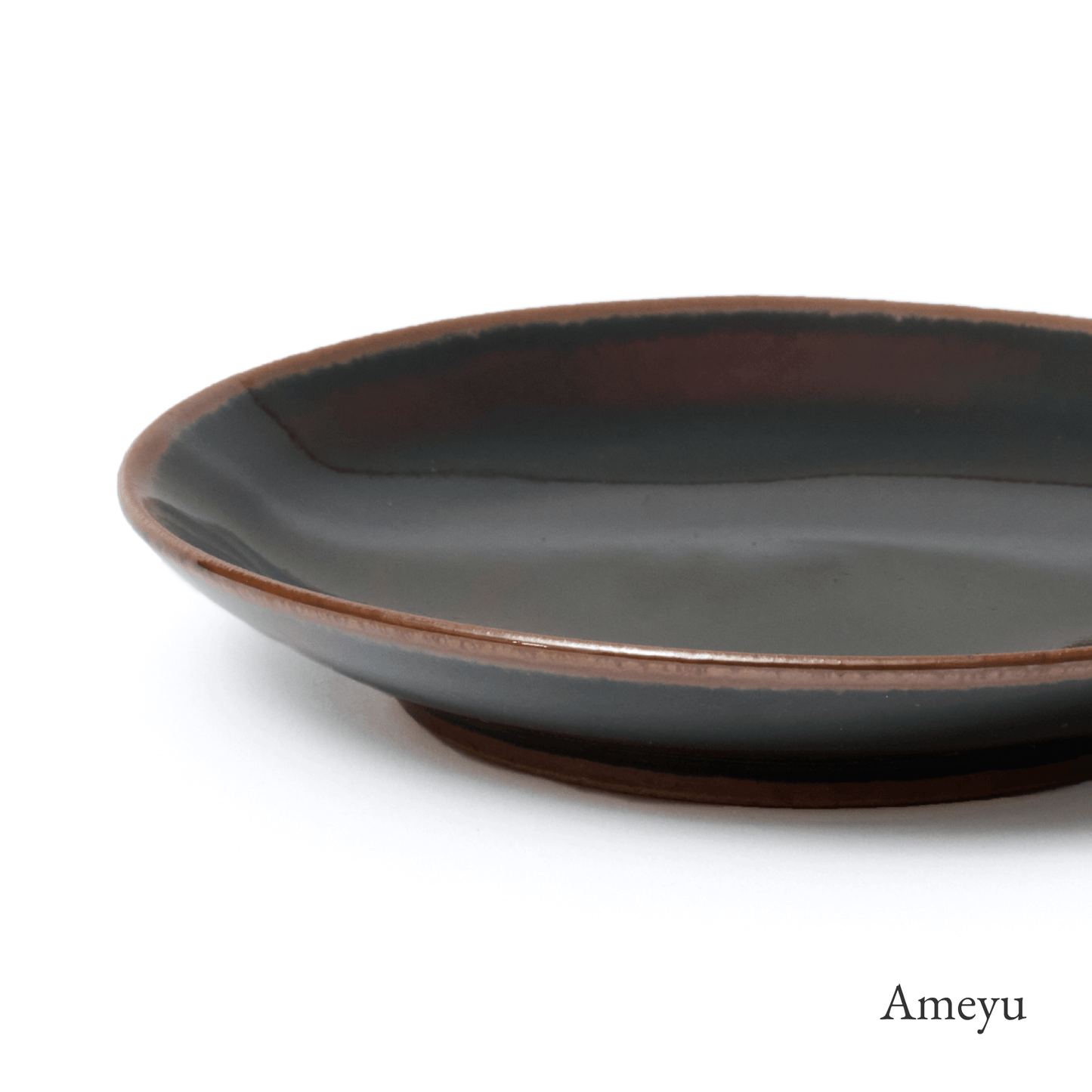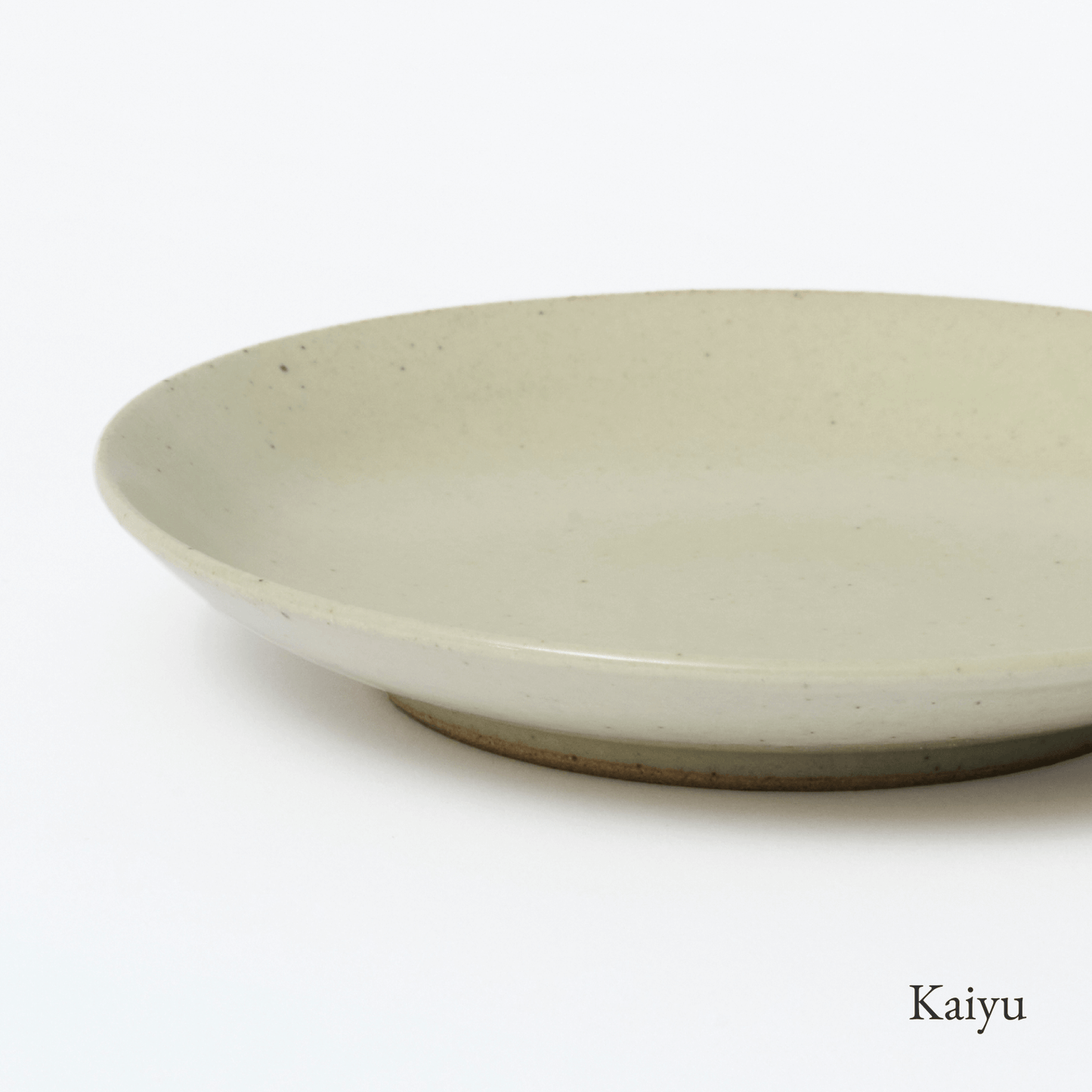SHINSHA (Purple)
The small quantities of copper mixed into the transparent base glaze create a reaction during
reduction firing, causing the glaze to develop a red color.
ORIBE (Green)
This glaze is produced by mixing copper into an ash glaze. Sen no Rikyu was a historical figure who invented the tradition of wabicha, the foundation of the modern tea ceremony in Japan. Furuta Oribe, one of Rikyu's renowned pupils, was fond of this dark green color and thus, his name became the origin of this glaze.
AMEYU (Maroon)
By adding a small amount of iron and manganese to the transparent glaze and then applying an oxidized firing method, a dark brown color and candy-like glossy finish appears.
SEIJI (Celadon)
The small quantities of iron in the glaze create a reaction during reduction firing, causing the glaze to develop blue color. This technique is particularly old, dating back to as early as the beginning of the 10th century.
KOHIKI (Ivory)
KOHIKI, also known as KONAFUKI, is a technique that involves blowing a type of dust to glaze earthenware. It gives the pottery unique whiteness and distinct softness. Also, depending on the environment during the glazing process, the pottery may come with a light shade of pink
after firing.
AKATSUCHI (Red Unglazed)
This finish uses a type of clay called BENISAKURA (Red cherry-blossom). The clay turns into beautiful red color when the temperature of oxidized firing is set rather lower than usual. The technique is called YAKISHIME which is to fire without any glaze on the surface of the pottery.
KOKUTO (Black Unglazed)
This finish can be created by coloring special clay from SHIGARAKI (a type of pottery from Shiga prefecture of Japan) into black and bake in reduction firing method. The technique is called YAKISHIME which is to fire without any glaze on the surface of the pottery.
